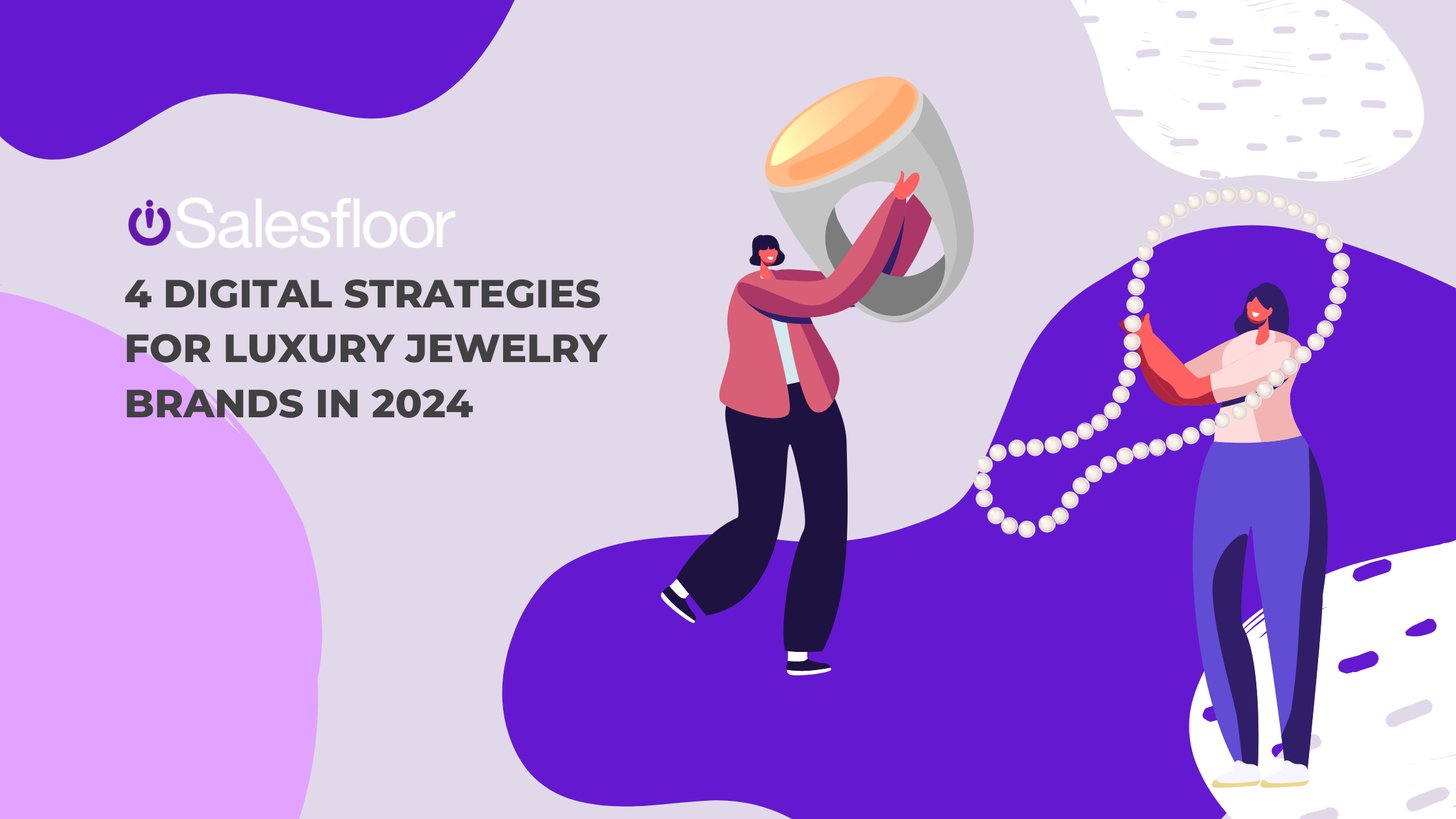
The last three years have created a new paradigm for luxury jewelry retailers. Before the pandemic, only 13% of jewelry sales were online. By 2025, McKinsey estimates that online jewelry sales will account for 18%-21% of the market.
This continued digitalization of the industry and shifting consumer values are creating new opportunities and challenges for fine jewelry brands. But these changes involve more than just adapting to modern trends. For luxury jewelry retailers, investing in technology is critical to crafting experiences that resonate with a digital-first generation.
Here, we’ll explore how the jewelry industry is evolving and discuss four digital strategies for 2024.
The Modern Luxury Jewelry Consumer
Today, younger generations are rejecting the traditional values associated with luxury jewelry. Instead of viewing jewelry as a symbol of status and exclusivity, they want to invest in brands dedicated to transparency, sustainability, and inclusivity.
New customers are also purchasing luxury pieces at younger ages. Bain & Company found that Gen Z consumers buy luxury items three to five years earlier than millennials. And these purchases are part of a shareable lifestyle. In recent years, Kendra Scott and David Yurman have seen a surge of online engagement with #Bamarushtok, where women share their outfits while rushing sororities.
Wherever they shop, younger consumers expect to be entertained. “A huge misconception is fine jewelry has to be formal, something that you will pass down for generations,” says Amanda Gizzi—Director of Jewelers of America–in a conversation with Business of Fashion. She argues that the jewelry-buying experience is “becoming less formal and more fun.”
4 Digital Strategies for Luxury Jewelry Brands
Here are four digital strategies luxury jewelry brands can use to drive customer engagement and revenue.
1. Leverage Social Media to Drive Storytelling
Luxury brands have been slower to adopt social platforms—especially TikTok. But, the platform has proven successful in reaching younger generations. In the first half of 2023, luxury retailers grew their media impact value (MIV) on TikTok by 11%. (This measure of engagement analyzes the impact of media mentions.) In comparison, fast fashion brands grew their MIV by only 7% during the same period.
For luxury jewelry retailers, social media platforms are a powerful tool to tell a brand’s story. Founder-led accounts, behind-the-scenes content, sneak peeks, and limited edition releases engage customers and foster community.
At the same time, visual content builds trust. Olivia Landau, founder and CEO of The Clear Cut, frequently appears on the brand’s social accounts to share behind-the-scenes of the company. “We’re selling such important and expensive pieces,” she said in a recent interview with Business of Fashion. “We want our customers to feel like we’re looking out for them, we have good intentions, and there’s a sense of authenticity and transparency there.”
2. Collaborate with Brands and Creators
Recent privacy changes and increased digital advertising costs have made customer acquisition more challenging. As a result, brands are looking for new ways to generate customer awareness.
Luxury jewelry retailers continue to see success with collaborations. Brand-to-brand partnerships—like Mejuri X Piecework—allow brands to offer limited-edition products while reaching new audiences. During their 2022 holiday partnership, Mejuri and Piecework created a puzzle featuring a photo of Mejuri jewelry. Mejuri also included a ticket to win a $500 necklace inside 20 boxes.
Creator partnerships also remain popular as customers prefer recommendations from people they can relate to. A recent AdAge and Harris Poll survey found that almost half of consumers look to creators before purchasing a product. Earlier this year, Brilliant Earth partnered with Stephanie Shepherd—co-founder of Future Earth—to showcase its commitment to sustainability and ethical sourcing.
3. Invest in Digital Tools for Education and Product Interactions
Although consumers are digital-first, many customers still want to feel and touch products—especially jewelry. Fine jewelry retailers can address these challenges by investing in digital showrooms and augmented reality (AR) try-on solutions.
Here are some examples of how jewelry brands are leaning into digital experiences to drive more meaningful product interactions.
- Cartier released the Cartier Tank, a virtual experience that transports customers to the Pont Alexandre III bridge in Paris. Customers can try on the four iterations of the watch over the past 106 years and see how the bridge looked during each period.
- Tiffany uses ray tracing technology to capture the sparkle of their diamonds. The technology—used in video games—captures the realistic movement of light during augmented reality experiences.
- Stephanie Gottlieb created a virtual store that reflects the color and imagery from the brand’s social accounts. “Originally we set out the create a meta-version of what our real store might look like,” Gottlieb told JCK. “[We] quickly realized that the metaverse is the place to go bold with ideas and design and execute something that wouldn’t really exist in the real world.”
4. Elevate the Customer Experience with Virtual Clienteling
Clienteling has always been a core strategy for luxury jewelry brands. In a digital-first era, luxury brands must leverage technology to create more personalized and convenient customer experiences.
Today, sales associates use virtual selling tools to engage customers remotely. Video calls, texting, virtual showrooms, and AR experiences can help employees showcase jewelry pieces even when customers cannot visit stores.
At the same time, AI-powered tools help sales associates take a more data-driven approach to clientelling. These applications analyze customer behavior and purchasing history to suggest more relevant recommendations and offers. At the same time, AI can detect human sentiment through text and speech analysis—helping employees better understand how to interact with customers.
Shining Bright in a Digital Era
Today’s digital-first world is amplifying the reach of fine jewelry retailers and redefining how customers experience luxury jewelry. As brands look to meet evolving consumer expectations, investing in digital strategies that drive engagement and personalization is critical. That’s where Salesfloor comes in.
At Salesfloor, we’re excited about the future of the customer experience. Salesfloor is the most robust customer engagement platform—unifying virtual shopping, clienteling, and AI-assisted selling. With Salesfloor, sales associates harness the power of technology and human connection.


